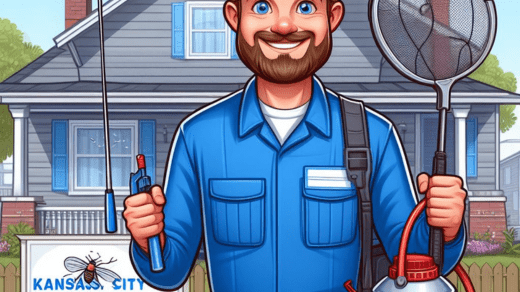With their many legs and swift motions, centipedes may make anyone shudder. Preventing centipede infestations is essential for keeping a clean and comfortable home in Kansas City, where the climate encourages their growth. We’ll talk about precautions that locals can take both before and after discovering infestations of centipedes in their homes with the help of a Kansas City exterminator team in this educational blog post.
Comprehending Centipede Behavior:
With their lengthy bodies and many legs, centipedes display unique behavioral patterns that can be both interesting and unnerving. These nocturnal animals are skilled hunters who feed on a wide range of insects and other tiny animals. They are most frequently seen in crawl spaces, basements, and under logs or rocks outside. They prefer dark, moist conditions.
With their numerous legs, centipedes may move quickly across their environment in pursuit of food, demonstrating their exceptional speed and agility. Even though they have a fearsome appearance, centipedes are often shy and prefer to stay away from people. They only come inside to look for food or refuge. But as a protection against possible predators, they may bite with their poisonous fangs, causing excruciating agony when threatened. In general, the behavior of centipedes provides an insight into the intricate dynamics of predator-prey relationships found in the natural world.
Preventive Steps Before Infestations:
1. Seal Entry Points: Centipedes can enter your home through tiny cracks and gaps in doors, windows, foundations, and utility penetrations. Inspect your home thoroughly and seal any potential entry points with caulk or weather stripping.
2. Reduce Moisture: Conditions that are high in moisture tend to attract centipedes. Repairing leaky pipes, enhancing ventilation, and placing dehumidifiers in moist locations like crawl spaces and basements will help keep your house dry.
3. Clear and Organize: Centipedes areas provide an excellent hiding and feeding ground for centipedes. Keep your house tidy and free of debris to prevent centipede hiding places and possible food sources.
4. Outside Maintenance: To keep centipedes from having easy access to your property, keep vegetation clipped and away from the façade. To keep water from collecting close to the foundation, make sure that the gutters and downspouts are free of obstructions.
Preventive Steps After Infestations:
1. Deep Cleaning: If you’ve encountered a centipede infestation, deep cleaning is essential to remove their hiding places and food sources. Vacuum carpets, sweep floors, and wipe down surfaces regularly to eliminate debris and pests that centipedes feed on.
2. Apply Natural Repellents: Certain natural repellents, such as essential oils like peppermint or citrus, can deter centipedes from entering your home. Spray these oils diluted with water around entry points and problem areas to create a barrier.
3. Use Sticky Traps: Place sticky traps in areas where centipedes are commonly found, such as basements, bathrooms, and crawl spaces. These traps can help capture centipedes and prevent them from reproducing.
4. Consider Professional Pest Control: If you take precautions against centipede infestations but they still happen, you might want to look into hiring Kansas City pest control experts. Experts in pest control can determine the degree of the infestation and suggest suitable treatments based on your unique requirements.
Centipede prevention necessitates a proactive strategy that takes care of potential access points into your home as well as environmental elements. Kansas City citizens can significantly reduce the likelihood of centipede infestations by taking these preventive measures both before and after infestations. Recall that keeping your home free of centipedes requires diligence and consistency.




